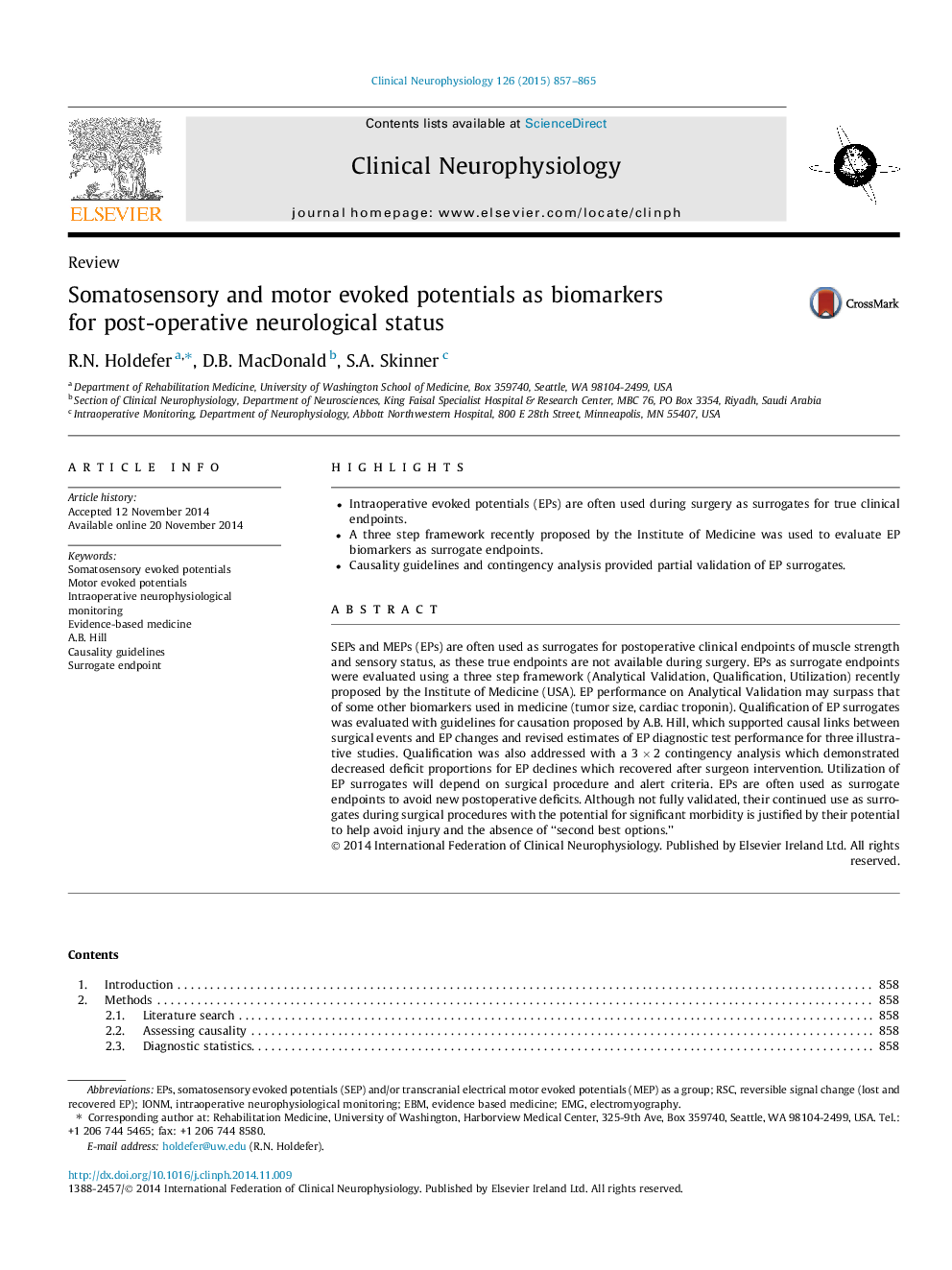| Article ID | Journal | Published Year | Pages | File Type |
|---|---|---|---|---|
| 3042777 | Clinical Neurophysiology | 2015 | 9 Pages |
•Intraoperative evoked potentials (EPs) are often used during surgery as surrogates for true clinical endpoints.•A three step framework recently proposed by the Institute of Medicine was used to evaluate EP biomarkers as surrogate endpoints.•Causality guidelines and contingency analysis provided partial validation of EP surrogates.
SEPs and MEPs (EPs) are often used as surrogates for postoperative clinical endpoints of muscle strength and sensory status, as these true endpoints are not available during surgery. EPs as surrogate endpoints were evaluated using a three step framework (Analytical Validation, Qualification, Utilization) recently proposed by the Institute of Medicine (USA). EP performance on Analytical Validation may surpass that of some other biomarkers used in medicine (tumor size, cardiac troponin). Qualification of EP surrogates was evaluated with guidelines for causation proposed by A.B. Hill, which supported causal links between surgical events and EP changes and revised estimates of EP diagnostic test performance for three illustrative studies. Qualification was also addressed with a 3 × 2 contingency analysis which demonstrated decreased deficit proportions for EP declines which recovered after surgeon intervention. Utilization of EP surrogates will depend on surgical procedure and alert criteria. EPs are often used as surrogate endpoints to avoid new postoperative deficits. Although not fully validated, their continued use as surrogates during surgical procedures with the potential for significant morbidity is justified by their potential to help avoid injury and the absence of “second best options.”
